1.4.12 Monitoring & evaluation of advocacy and influencing work

Monitoring and Evaluation of advocacy and influence work can have several purposes. These include:
-
Accountability - do the actions tie to the intended results? This type of data helps us better understand if we picked the right modalities, advocacy targets, and timing;
-
Informing decision-making - data collected informs improvements of advocacy efforts through influencing actions. Process evaluations or formative evaluations examine why an action did or didn’t work, and not solely at the outcome, and;
-
National and global learning - after the work is finished, learn what worked well and what could be improved for future actions. An example of an evaluation that could measure this is an impact evaluation.
Goals will differ based on the advocacy targets; if there were multiple advocacy targets, there may be different goals that should be measured. For example, an outcome for targeting policymakers could be increased awareness on a topic, change in opportunity and/or change in a policy. On the other hand, outcomes for the public could be increased support for an issue.
Different types of evaluations (e.g. formative or process evaluations vs. impact evaluations) can be used for different goals. Nevertheless, it is important for OPDs to be actively involved in evaluations and give feedback on their involvement throughout the process.

| Previous | Next |






